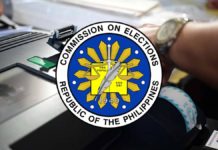ILOILO City – Boracay Island’s rehabilitation is still a work in progress but it is reopening to tourism activities beginning today anyway. It may take about two years to complete the rehabilitation, according to Local Government secretary Eduardo Año. So what can – and can’t – tourists and accommodation establishments do in the world-famous island resort?
Last week, the Department of Environment and Natural Resources (DENR) spearheaded the dry run for Boracay’s reopening. Photographs of scattered cups and other trash in the beach surfaced after the dry run started.
Visitors cannot simply enter the island as they wish. The Boracay interagency task force overseeing the rehabilitation is limiting the number of tourists coming in. Roughly only 19,000 tourists may stay on the island at any given time. How will it do this?
Before entering Boracay tourists would be required to present reservations slips or proof of bookings in accommodation establishments accredited by the Department of Tourism (DOT). “No booking, no entry” is the policy to regulate the entry of tourists.
As of Oct. 19 – a week before today’s soft opening – the interagency task force chaired by the Department of Environment and Natural Resources (DENR) named 115 accredited accommodation establishments with a total of 5,365 rooms available. Yesterday, the figures rose to 43 restaurants and 170 hotels.
In an advisory, the task force urged the public not to transact with establishments that have not yet secured the necessary clearances, permits and/or accreditation from the DOT, DENR and Department of Interior and Local Government (DILG).
Non-compliant establishments soliciting and/or accepting booking reservations (despite the lack of clearance to open) may be subjected to civil suits for deception.
BEACH ACTIVITIES
Smoking and drinking alcoholic beverages are no longer allowed along the White Beach.
The “Laboracay” annual Labor Day party is banned while diving in waters surrounding island is temporarily prohibited.
All water sports and water activities are also temporarily suspended.
Dining by the beach and installation of electric lights on the beachfront is prohibited while fireworks displays are allowed only until 9 p.m.
The famous sandcastle-making in the beachfront will also be regulated.
Souvenir shops and hawkers along beachfront are now banned and fire dancing that uses kerosene is disallowed.
Casinos are banned on the island.
Meanwhile, the Tourism Infrastructure and Enterprise Zone Authority (TIEZA) has been tasked as sole regulator of Boracay’s water lines.
Also, hotels not connected to the island’s sewarage system or do not have their own water treatment facilities won’t be allowed to reopen.
TIEZA assistant chief operation officer Nestor Dimalanta said the expansion of the drainage system will be finished by the end of 2019.
Livelihood undertakings such putting up piggeries and poultry farms are banned in the island while hot-coal roasting of meats is prohibited.
‘80% RESTORED’
According to DENR, “80 percent” of Boracay’s “pristine beauty” has been restored after six months of rehabilitation.
“We’re not yet 100 percent complete but we’re going to that direction. At least we can say we are now 80 percent restoring the pristine beauty and original situation of the island,” said Undersecretary Jonaes Leones.
Visitors will be allowed to swim only at the front beach and Puka beach, he stressed.
“In Barangay Bulabog, there are still problems such as the water quality. That’s why we will not allow tourists there,” Leones said.
NEW TRANSPORT SYSTEM
Department of Transportation assistant secretary Mark de Leon said the island now has a new transport system which addresses complaints such as tricycles charging P100 to P150 pesos per trip.
“We will be using an application where all the passengers will be able to pay their rides through wristband or tap card system,” de Leon said.
“You don’t need to bring cash. You don’t need to haggle your fare with the drivers. Just tap the card or the wristband. This will solve a lot of problems such as road congestion,” he added.
The tap card or wristband can be used to ride around 500 e-trikes and 50 jeepneys that will operate on the island.
He said ridesharing firm Grab, in coordination with a local cooperative, agreed to give free rides up to December. (With reports from Philippine News Agency and ABS-CBN News/PN)





